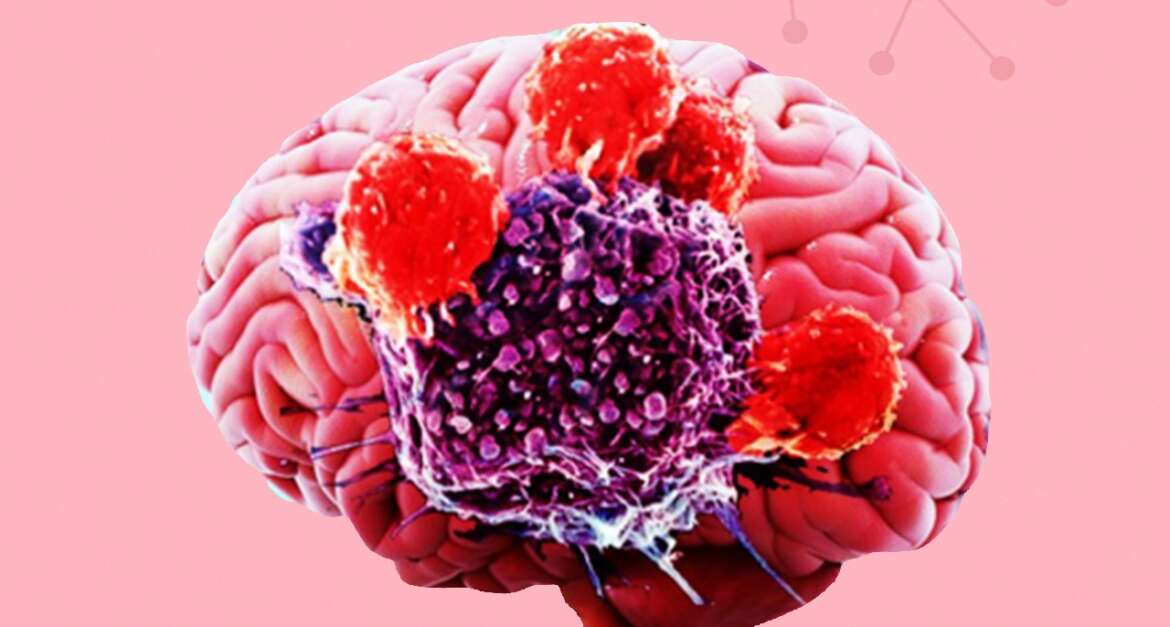Tumors of the brain are masses of abnormal cells.
Tumors of the brain can take many forms. Some brain tumors are benign (benign), while others are malignant (cancerous). Cancer can begin in your brain (primary brain tumors) or spread from other parts of your body to your brain (secondary or metastatic brain tumors).
Types
- Auditory neuroma
- The astrocytoma
- A brain metastasis
- Carcinoma of the choroid plexus
- Craniopharyngioma
- Tumors of the embryo
- Epidemiology
- Neuroblastoma
- Glomerulome
- Idiopathic medulloblastoma
- Méninoid
- Oligodendroglioma
- Tumors of the pediatric brain
- Phytoblastoma
- Tumors of the pituitary gland
Symptoms
- A brain tumor’s signs and symptoms differ greatly based on its size, location, and growth rate.Brain tumors may cause the following signs and symptoms:
- New onset of headaches or a change in headache pattern
- Headaches that gradually become more severe and frequent
- Nausea or vomiting without explanation
- Problems with vision, such as double vision, blurry vision, or loss of peripheral vision
- An arm or a leg loses sensation or movement gradually
- Balance issues
- Difficulties speaking
- Experiencing extreme fatigue
- Confusion in everyday life
- Decision-making difficulties
- Having difficulty following simple instructions
- Behavior or personality changes
- Especially in someone without a history of seizures
- Hearing difficulties
Diagnosis
- The doctor may recommend a variety of tests and procedures to determine whether you have a brain tumor, including:
- An examination of the nervous system.
- Tests of imaging.
- Other imaging tests, such as computed tomography (CT) and positron emission tomography (PET), are sometimes needed in certain situations.
- An abnormal tissue sample is collected and tested (biopsy).
- Stereotactic needle biopsy might be better for brain tumors in areas that are hard to reach or in susceptible regions of the brain. It involves drilling a small hole into your skull. Then a thin needle is inserted. An MRI or CT scan is frequently used to guide the hand to remove tissue.
- An examination under a microscope determines whether the biopsy sample is cancerous or benign. Your doctor can use advanced laboratory tests to determine your prognosis and treatment options. Identifying the exact type of brain tumor you have from your biopsy sample is a complex process. Consider seeking a second opinion at a medical center where many brain biopsies are performed yearly if you are uncertain about your diagnosis.
Treatment
- Generally, back pain gets better within a month of home treatment. Each person experiences back pain differently. It usually takes several months for the pain to go away for some people, but only a few have persistent, severe pain.Taking pain relievers over-the-counter and applying heat might be all you need. Avoid sleeping.Do what you can to continue your activities. You can walk or engage in daily activities. Avoid activities that increase pain, but don’t avoid activities because you fear pain. Your doctor might suggest stronger medications or other treatments if your home treatments aren’t working after several weeks.
Medications
- Your doctor may recommend the following treatments based on the type of back pain you have:
- Pain relievers are available over-the-counter (OTC). Naproxen sodium (Aleve) and ibuprofen (Advil, Motrin IB) are nonsteroidal anti-inflammatory drugs (NSAIDs) that might help relieve back pain. Follow your doctor’s instructions when taking these drugs. Overuse can have serious consequences. NSAIDs may be prescribed if OTC pain relievers do not relieve your pain.
- Relaxants for muscles. Mild to moderate back pain that doesn’t resolve with over-the-counter pain relievers may also require a muscle relaxant. Relaxants can cause dizziness and sleepiness.
- The use of topical pain relievers. Using creams, salves, ointments, or patches, these products deliver pain-relieving substances through the skin.
- Benzodiazepines. If used under the supervision of your doctor, opioids such as oxycodone and hydrocodone may be used for a short period. Opioids do not work well for chronic pain, so a prescription usually provides fewer than seven days’ worth of pills.
- There is evidence that antidepressants, especially duloxetine (Cymbalta) and tricyclic antidepressants (such as amitriptyline), can relieve chronic back pain even when they do not alleviate depression.
Physical therapy
- It is possible to increase the flexibility and strength of your back and abdominal muscles and improve your posture with the help of a physical therapist. Regularly using these techniques can reduce pain from returning. The physical therapist will also educate you about modifying your movements during episodes of back pain to prevent flaring pain symptoms while remaining active.
Surgical procedures and other procedures
- Back pain can be treated with the following procedures:
- Taking cortisone injections. The doctor may give you an injection of cortisone – a solid anti-inflammatory drug – and numbing medication into the space around the spinal cord (epidural space) if other measures fail to relieve your pain. The pain relief from a cortisone injection usually lasts for only a few months.
- Neurotomy using radiofrequency. A fine needle tip is inserted into the skin near the area, causing pain during this procedure. Through a hand, radio waves damage nearby nerves, which interfere with pain signals being sent to the brain.
- Stimulators implanted in the nerves. Under the skin, electrical impulses can be delivered to specific nerves to block pain signals.
- Surgical procedures. If you suffer from unrelenting pain caused by radiating leg pain or progressive muscle weakness due to nerve compression, you might benefit from surgery. Pain resulting from structural problems, such as narrowing the spine or a herniated disk, typically responds well to these procedures.

